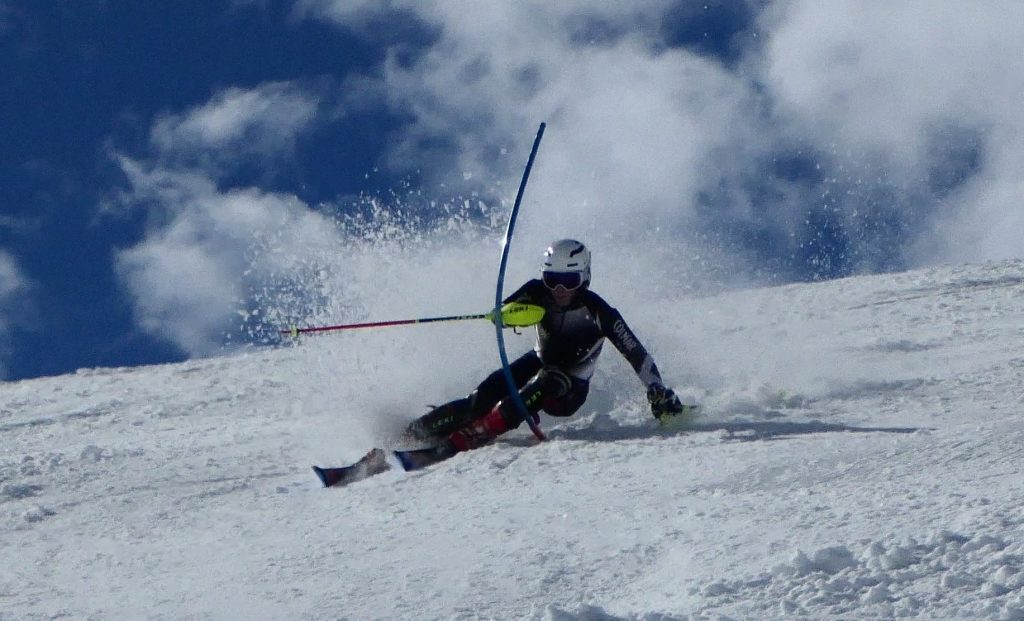- Skating
- Dynamics (basic)
- Combining dynamics with snowplough
- Feet Forward Technique
- Side Slipping
- Pivot
- Combining dynamics and pivot (skiing parallel)
Combining Dynamics and Snowplough
Dynamics is explained in terms of the mechanics of accelerations. (F=mA Newton’s 2nd Law). In skiing this means you move your centre of mass (either falling or with a push) in the direction you want to turn. You do not transfer your weight to the outside ski as is incorrectly taught in ski schools.
In the (narrow) Snowplough using dynamics requires the adductors of both legs to be engaged and now the “deflection” (turning in an arc) is carried out by moving the Centre of Mass (CoM) across the skis in the direction of turning. The displacement of the CoM affects the geometry of both skis with respect to the slope (one goes flatter and the other more on edge) and that’s where the deflection comes from.
On steeper terrain the downhill ski (inside ski of the turn) takes the weight of the body and is used as a brake – pivoting slowly into the turn – until half way through the weight shifts by itself to the outside ski which is now able to take over the continued braking effect.
Feet Forward Technique
“Feet Forward Technique”… gives security through the start of a turn on steep terrain by tightening the turn radius.
Pushing the outside (uphill initially) foot forward during the turn. The foot never gets in front of the other foot – it just tightens the turn instead.
The exercise is practised with skis off and standing in ski boots. For this static exercise we use ski pole support with the body faced downhill with the uphill foot pointing across the hill and the downhill foot pointing downhill and the heel jammed into the snow. The uphill boot is pulled over onto its inside edge and pushed forwards in a natural arc.
Here is some video of exactly the same action in ice hockey training. In skiing the direction of travel would be straight downhill instead of straight ahead on the flat ice.
Combining Dynamics and Pivot
- Dynamics depends of forward motion of the skis and lateral falling/pushing of the centre of mass
- Pivot depends on lateral motion of the skis – but always with the centre of mass being driven inward (toward the turn centre) modulated by the support of a pole plant
- The two can be combined – when there is both forward and lateral motion – making overall control of trajectory and speed totally under control of the skier
- In all cases there must be active adductor muscle use – and the feet must be “everted” i.e. turned outward inside the ski boots – diverging sightly (skating stance)
- The essential element to take from combining pivot and dynamics is to execute the turn transition from the uphill edge of the uphill ski – noting that the ski enters the new turn more easily than when on its inside edge and this also prevents stemming (and body rotation)
- Additionally with the transition between the two turns being made from the uphill edge it’s easy to switch into a very tight pivot when desired
Look at the skis in the two images below. The top image is with skis carving – the bottom image skis pivoting



